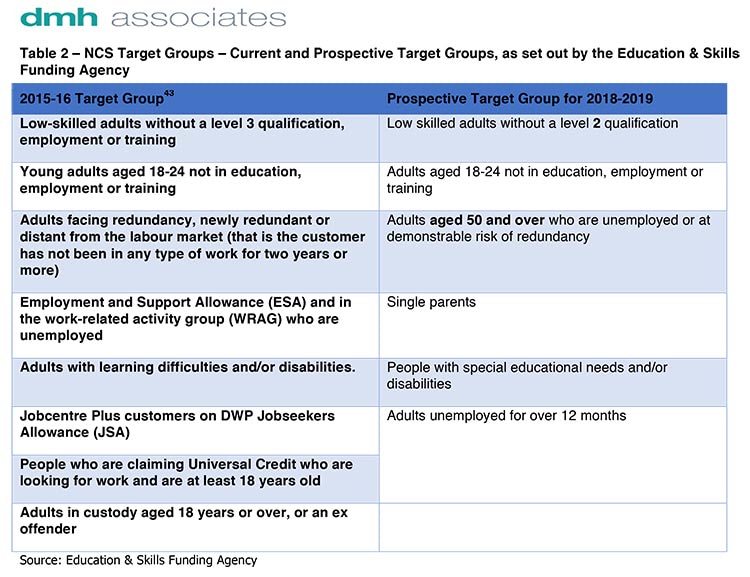What lies ahead for careers guidance, with funding cuts of 24%?

CAREERS ADVICE FOR ADULTS: £9 SAVED FOR EVERY £1 SPENT.
In late 2017, the Board of Careers Yorkshire and the Humber: National Careers Service commissioned dmh associates to undertake an economic review and analysis of the productivity and economic benefits of the service, “Productivity and the Economic Benefits: National Careers Service – Careers Yorkshire and the Humber“.
The period under review focuses on data available from early 2015 – mid year 2017 and the primary focus is on face-to-face careers guidance for adults.
Three key questions that were asked:
- What level of fiscal return does the National Careers Service: Careers Yorkshire and the Humber make to HM Treasury?
- Is the National Careers Service priority target group, set by the Education & Skills Funding Agency (ESFA), linked to a payment by results, sufficient to meet regional/local needs?
- What lies ahead in Yorkshire and the Humber when it comes to the National Careers Service face-to-face careers guidance work with adults in the coming year(s)?
Level of fiscal return
For every £1 invested in the National Careers Service: Careers Yorkshire and the Humber £9 is returned in fiscal benefits to the Treasury and the wider economy. The service paid for itself in less than 2 months. This would imply the service has already paid for itself 4 times over halfway through this fiscal year.
The economic benefits created for the Treasury are, as a minimum, the cost savings in payments of Job Seeker Allowance (JSA) and other benefits, as well as the additional income to the Treasury accrued from income tax payments from those adults newly employed.
The estimated economic benefit is calulated by the Department for Work & Pensions (DWP) to be £9,800 per successful intervention, and are the result of an individual entering work, paying taxes and ceasing to receive benefits.
Societal benefits were assumed to be £14,610, the average wage expenditure in the UK. When total societal benefits are considered, the impacts are greater still. Both of these figures were uprated for inflation for 2015 and 2016, to represent the likely larger real benefits job outcomes generated last year
A 2016 national survey on the face-to-face area based service conducted by the ESFA showed the following results:
- 31% of customers moved from unemployment to employment
- 55% of customers progressed in employment
- 68% of customers progressed in learning
- 58% of customers felt that the National Careers Service adviser played a part in achieving employment progression
- 60% of customers felt that their National Careers Service adviser played a part in achieving progression in learning.
The level of funding is set to drop by 24% in Yorkshire and the Humber from October 2018. This reduction in funding is a false economy given face-to-face careers guidance gives direct fiscal benefits and creates the conditions for more individuals to progress towards meaningful education, training and/or employment. This, in turn, supports increased productivity and prosperity across Yorkshire and the Humber region.
By March 2018, the National Careers Service-induced Job and Learning Outcomes (JLOs) are expected to increase by 10% on the previous year, with those entering Learning or Training increasing by 24%. The Education & Skills Funding Agency (ESFA) is proposing significant changes regarding priority target groups.

Two key questions for policymakers and regional influencers to consider are:
- How adults with level 2 but below level 3 qualifications in Yorkshire and the Humber gain bespoke face-to-face careers guidance when they need it most?
- What is level of national financial investment in local careers services for adults?
This report is now released at a time when new National Careers Service Area-Based contracts in England will come into place from 1st October 2018. The National Careers Service Area-Based contracts (2014) totalled £75,400,000 across 12 geographical areas. From 1st October 2018, the contract value is approx £40,000,490 to cover 9 new geographical boundaries i.e. there are fewer but larger regions. Over a four year period, the budgets have shrunk by 46%.
24% funding cuts MAKES LITTLE ECONOMIC SENSE.
While these cuts would save £1.3 million per annum in costs, they would see a £12 million fall in fiscal benefits, as well as a total societal benefit fall of at least £30 million.
Funding for face-to-face careers guidance does not only pay for itself, but it also returns 9-fold towards the cost of the service. The ROI is understated as it does not account for the value of learning outcomes or the value of progression in work and other societal benefits.
The real return is much higher, nearer double, given that this return on investment (ROI) is based on job outcomes within contractual rules (for 2016, 17.3% of job outcomes were claimable and used in the above ROI results versus 31% of customers who moved from unemployment to employment). Actual job outcomes are much higher.
Dr Deirdre Hughes OBE, Director, DMH & Associates Ltd, Associate Fellow, University of Warwick, Institute for Employment Research (IER)











Responses